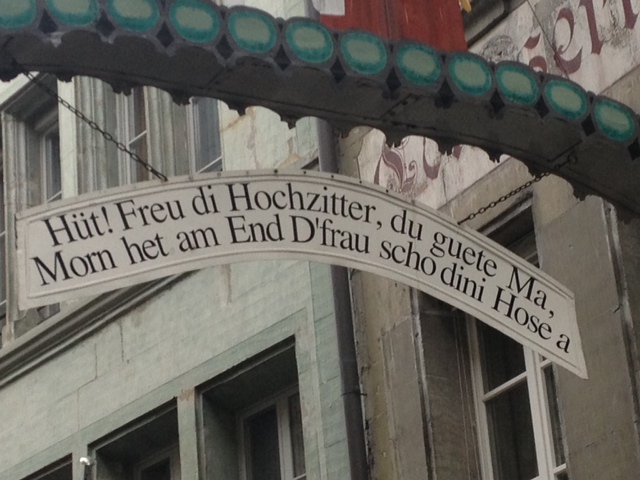European Travels: A Cruise and Norwegian Language Politics...
 Updated 2-17-2017: Norwegian Language Politics
Updated 2-17-2017: Norwegian Language Politics
During our recent trip with the Hurtigruten Line along the Norwegian coastline from Bergen to the Northcap (picture left) and Kirkenes, on the Russian border, we had an opportunity to learn much about Norwegian language and history.
Yes, the Vikings were a frequent topic of conversation and the focus of a few excursions. Between the late 8th and the middle of the11th century, Vikings had ruled the North Sea and had even ventured into the Mediterranean Sea.
Also, there's evidence that they had reached Iceland and Greenland. Leif Erikson may well have been the first European to set foot on mainland America. But we also found the more recent history of Norway and especially the role of the Norwegian language quite interesting.
And, if you'd like to learn about the best ways to experience the Northern Lights - which we witnessed several times - click on the link!)
Nordic Languages: Danish - Norwegian - Swedish
Although friends had told us that these Nordic languages are quite similar to German, my one-month Swedish course did not yet make this obvious to me. And sitting at a dinner table with four Swedes every night, I never caught any part of their conversation - except if they switched to German or English for our benefit.
From Danes, Norwegians, and Swedes on the ship we learned that they can generally understand each other's language, but that regional dialects can pose a real problem.
In Norway, the two official forms of written Norwegian are "Bokmål" (book tongue), used by more than 86% of the people, and Nynorsk (new Norwegian), used by 7.5%. But as this Wikipedia link further explain, the language situation is quite complex.
Nynorsk – a newly created language
As we inquired further into Nynorsk, we learned that this language was created by Ivar Aasen in the middle of the 19th century from old Nordic dialects. One would ask: why create a new language? For Norway, language was a way to reinforce a distinct Norwegian identity, as the nation strove for and then acquired, in 1905, its independence from Sweden.
Some Norwegians suggested to us, however, that with Norway's affluence and growing national confidence, the movement for popularizing Nynorsk may be slowing down.
The benefits of a second national language taught in school are being questioned as other languages become ever more important. (I am leaving out of this discussion any local dialects and the distinctly different language of the Sami, the indigenous Finno-Ugric people inhabiting the northern part of the Scandinavian peninsula.)
A little more Nordic History
After the end of the Viking era (around 1050), Norwegian tribes and communities were ruled for centuries by Danish and then by Swedish kings. Nation states as such only developed in Europe in the 18th and 19th centuries, often after considerable strife.
It was therefore surprising to some, when in 1905, Sweden accepted the plebiscite of the Norwegians, and agreed to release Norway from the joint kingdom of Norway and Sweden.
The story of the peaceful dissolution of the union between Norway and Sweden makes interesting reading for history buffs, who also may be intrigued by the people's election (!) of the Danish (!) crown prince as their new king.
Politics, Dialects, and "standard" language
In the past, political leaders have often tried to impose new languages on their people. When the Normans won the battle of Hastings in 1066, French became the language of English nobility.
Although French certainly influenced and modified the language of English peasants and commoners, it did not replace it. (Read more in our blog post: The French Connection) French became the language at many European courts in the 18th and 19th centuries and many French words found their way into the various European languages.
In the region of Catalonia, which includes the second largest city in Spain, Barcelona, the local language is Catalan. Catalan is both a spoken and a written language.
As Castilian Spanish is taught in schools, most Catalans are indeed bilingual - although traces of animosity towards Castilian seem to remain, even, surprisingly, with some younger people. (Read more in our blog post: In Barcelona Learning "Spanish" is Not Enough)
Switzerland has a somewhat different situation. Spoken "Swiss German" or "Schwyzerdütsch" is the common language in the German-speaking cantons, although there are noticeable dialect differences among them.
"Swiss German" or "Schwyzerdütsch" is the common language in the German-speaking cantons, although there are noticeable dialect differences among them.
However, "High German" or "Schriftdeutsch" (Written German), as the Swiss call it, is taught in schools. It's the printed language of newspapers and is used by all Swiss Germans to write. With very few exceptions - see picture at right - Swiss German is not used for writing or print. (For a translation of the above sign and the French version see our post: 11 Language Clues from German and Swiss Signs.)
The Norwegian Language and National Identity
Clearly, language plays an important role in a people's identity. In the case of Norway, it will be interesting to watch whether Nynorsk will survive and prosper alongside Norway's presently more dominant language, Bokmål.
Postscript:
In March 2019 the Norwegian Academy (a Norwegian language learning site) published a post on the question whether to learn Nynorsk or Bokmål. They conclude: "So it comes to your preferences and your place of living. It might be hard to learn writing Bokmål in an area where everyone uses Nynorsk." And, if you happen to be relocating to Norway, a localization service can be very helpful.
